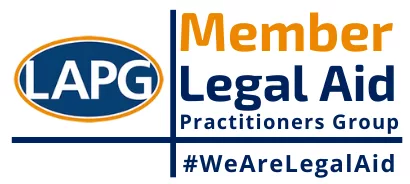The vast majority of couples looking to dissolve a marriage do so by the divorce process, but there are other methods of ending a marriage. Annulment refers to marriages which, for one reason or another, were either void at the outset or have become voidable at some point after formation. Although this method of dissolving a marriage is only rarely used (there were only 360 annulments in 2016*), it remains an important feature of matrimonial law. Marriages can only be annulled if they are void or voidable. If a marriage is void, then it is treated as having never been validly formed and so, in the eyes of the law, never happened. In contrast, a voidable marriage is one that could be annulled by one or the other of the parties, if they so choose, but will remain valid if no action is taken.
The reasons why a marriage would be void are:
1. The parties are closely related (e.g. parent and child or siblings); or
2. Either party is under the age of sixteen; or
3. The marriage was not conducted by a registered person in a licenced venue; or
4. At the time of the marriage, either party was already married to another person.
The reasons why a marriage may be voidable are:
1. The marriage has not been consummated due to a party’s incapacity; or
2. The marriage has not been consummated due to a party’s wilful refusal; or
3. There was a lack of consent due to duress, mistake or unsoundness of mind or otherwise; or
4. At the time of marriage a party was suffering from a communicable venereal disease; or
5. At the time of the marriage a party was pregnant by someone other than the other party; or
6. An interim gender recognition certificate has been granted to one of the parties after the marriage.
Although petitions for nullity are rare compared to divorce there can, in certain circumstances, be benefits for parties to pursue this avenue. There is no bar to petitioning for nullity within the first year of marriage, as there is in divorce cases, and an annulment can avoid the religious or cultural stigma that may attach to divorce in some communities. As an annulment voids a marriage it can be a useful way for individuals to extricate themselves from an unhappy marriage without the need for a divorce.
Another advantage of an annulment rather than a divorce relates to subsequent financial proceedings in Court. An annulment does not prevent the Court making an order regarding finances, but it does mean that the Court may place emphasis on different factors than they would with a divorce. This is because, when deciding how to deal with the finances in divorce proceedings, the Court has regards to the Section 25 factors in the Matrimonial Causes Act 1973. These look at the contributions made by each party towards the marriage and how the parties behaved throughout it. If you are not actually considered by the Court to have been married, and your marriage is annulled, then it is likely that the contributions, responsibilities and promises owed to a spouse will not be bestowed on you to the same extent as had you been married. Therefore, the Court might consider that you owe less financial support to your ex-partner than perhaps you might have done if they had been your spouse.
However, the parties must be able to prove one of the specific grounds above, and must also satisfy other conditions to do with jurisdiction and strict time limits for some of the grounds. It is therefore important to research the conditions before commencing the process. Furthermore, a hearing is required in nullity proceedings, as opposed to undefended divorce proceedings which are usually dealt with on paper, which can add significantly to the costs and complexity of the process. Therefore, annulment may not always be an option even if the parties would prefer to avoid divorce proceedings. The specific features of annulment and divorce, along with the different processes that need to be employed, mean that it is crucial for parties to seek expert advice as early as possible in the process to ensure that they take the appropriate steps.
—————————-
*‘Divorces in England and Wales QMI’, ONS, 18 October 2017





